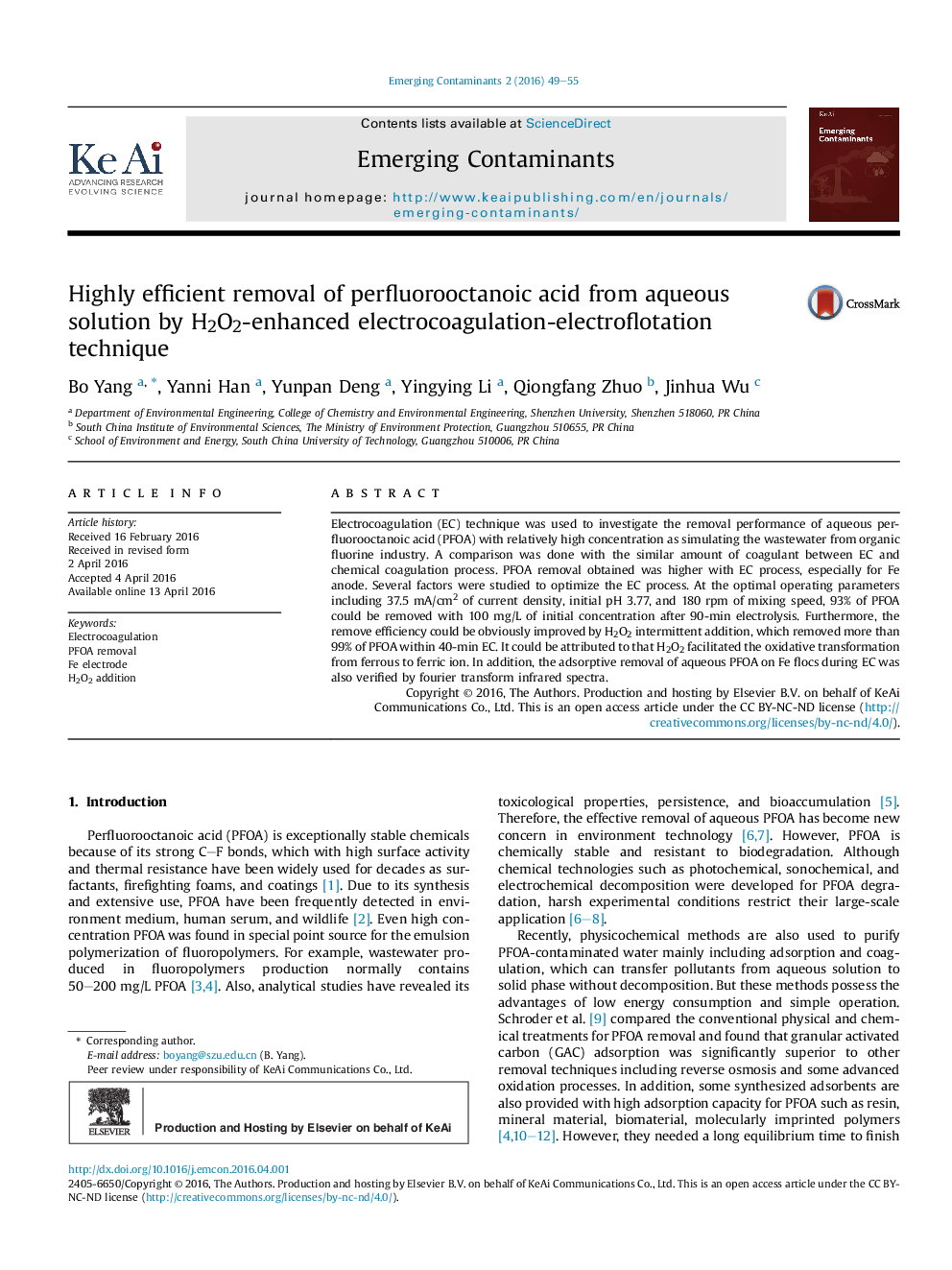| Article ID | Journal | Published Year | Pages | File Type |
|---|---|---|---|---|
| 4422640 | Emerging Contaminants | 2016 | 7 Pages |
Electrocoagulation (EC) technique was used to investigate the removal performance of aqueous perfluorooctanoic acid (PFOA) with relatively high concentration as simulating the wastewater from organic fluorine industry. A comparison was done with the similar amount of coagulant between EC and chemical coagulation process. PFOA removal obtained was higher with EC process, especially for Fe anode. Several factors were studied to optimize the EC process. At the optimal operating parameters including 37.5 mA/cm2 of current density, initial pH 3.77, and 180 rpm of mixing speed, 93% of PFOA could be removed with 100 mg/L of initial concentration after 90-min electrolysis. Furthermore, the remove efficiency could be obviously improved by H2O2 intermittent addition, which removed more than 99% of PFOA within 40-min EC. It could be attributed to that H2O2 facilitated the oxidative transformation from ferrous to ferric ion. In addition, the adsorptive removal of aqueous PFOA on Fe flocs during EC was also verified by fourier transform infrared spectra.
